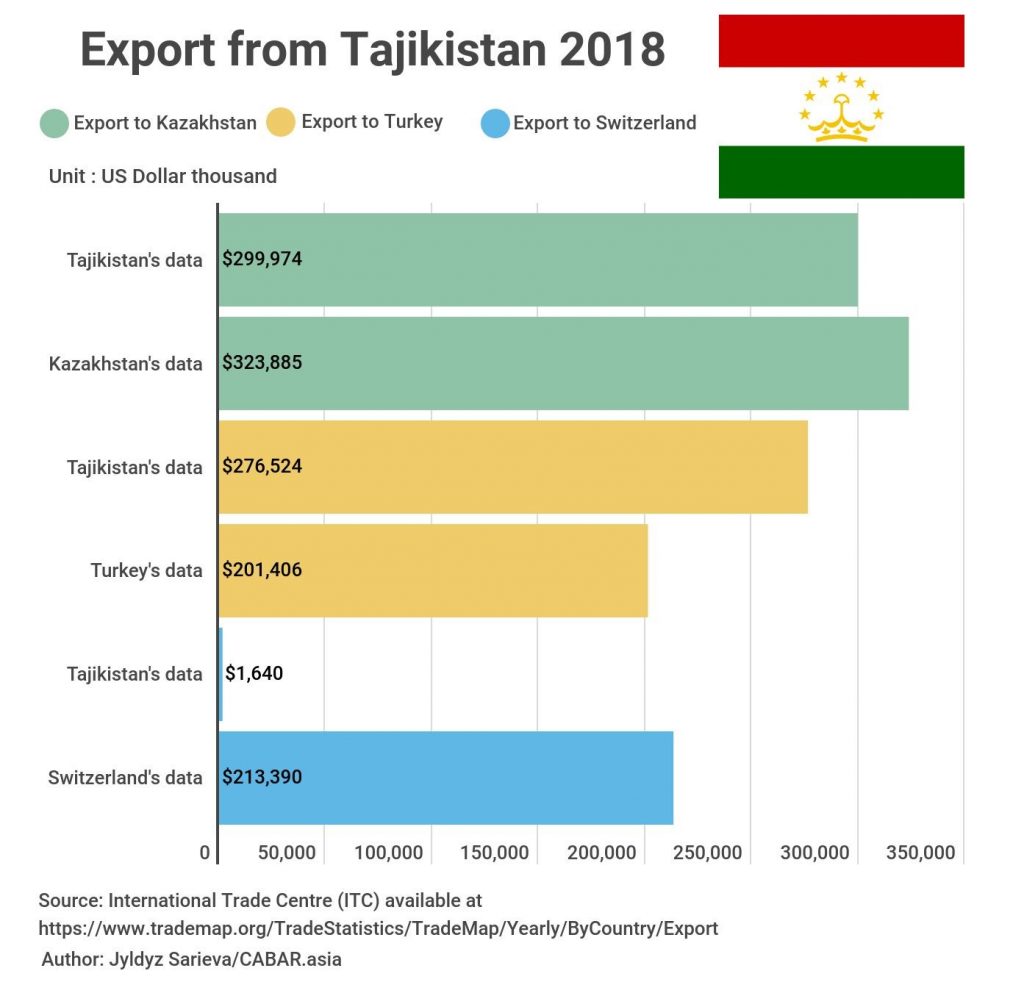
Tajikistan’s main trading countries
Tajikistan, a landlocked Central Asian nation, maintains significant trading relationships with a variety of countries. Its trade dynamics are shaped by its geographical location, limited industrial base, and reliance on a few key exports. Below is an overview of Tajikistan’s main trading partners:
1. Russia
Russia is one of Tajikistan’s most important trading partners. As a member of the Commonwealth of Independent States (CIS), Tajikistan benefits from close economic ties with Russia. Russia is a major destination for Tajikistan’s labor migrants, whose remittances contribute significantly to the country’s economy. In terms of trade, Russia exports essential goods such as fuel, machinery, and construction materials to Tajikistan, while importing agricultural products like fruits and vegetables.
2. China
China has become an increasingly significant trade partner for Tajikistan, especially in recent years. The two countries have expanded economic cooperation under China’s Belt and Road Initiative (BRI). China is a key supplier of machinery, electronics, and manufactured goods to Tajikistan, while also investing heavily in the country’s mining and energy sectors. Tajikistan exports raw materials, including minerals and metals, to China.
3. Kazakhstan
Kazakhstan plays a crucial role in Tajikistan’s trade, serving as both a trading partner and a transit hub. Tajikistan imports essential goods such as grain, flour, and oil from Kazakhstan. The country also benefits from Kazakhstan’s advanced infrastructure for re-exporting goods. Conversely, Tajikistan exports agricultural products and raw materials to Kazakhstan.
4. Uzbekistan
Uzbekistan has emerged as a significant trading partner since the improvement of bilateral relations in recent years. Trade between the two countries includes goods such as agricultural products, textiles, and building materials. Tajikistan also imports natural gas and industrial goods from Uzbekistan, while exporting fruits, vegetables, and other produce.
5. Turkey
Turkey is a major trade partner outside the CIS region, providing Tajikistan with textiles, machinery, and household goods. Turkish companies also have investments in Tajikistan’s construction and energy sectors. Tajikistan exports agricultural products, cotton, and aluminum to Turkey, taking advantage of its favorable trade terms.
6. Afghanistan
Afghanistan is a neighboring country with growing trade ties with Tajikistan. The two countries exchange agricultural products, textiles, and basic goods. Tajikistan also provides electricity to Afghanistan, a key export that strengthens economic ties between the nations.
7. European Union (EU)
Although trade volumes with the EU are smaller compared to regional partners, the bloc remains important for Tajikistan. The EU imports raw materials like aluminum and cotton from Tajikistan while exporting machinery, pharmaceuticals, and vehicles. Germany, in particular, has been a prominent trading partner within the EU.
8. India
India is another notable trade partner for Tajikistan. The trade relationship primarily involves India importing fruits, vegetables, and herbs from Tajikistan, while exporting pharmaceuticals, textiles, and electronic goods.
9. Iran
Iran has maintained trade relations with Tajikistan, with an emphasis on energy and infrastructure projects. The two countries trade a range of products, including machinery, metals, and construction materials.
Conclusion
Tajikistan’s trade network is diverse but centered around key regional partners such as Russia, China, and Kazakhstan. Its economy heavily relies on imports for industrial and consumer goods while exporting raw materials, agricultural products, and energy. The country’s strategic location and participation in initiatives like the Belt and Road Initiative and regional economic forums ensure its continued engagement with major global and regional economies.





Leave a Reply